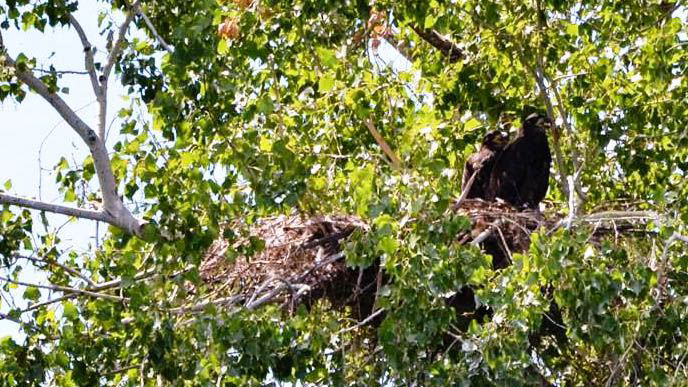For the first time in more than 50 years, the Hanford Nuclear Reservation is now home to two baby bald eagles. Wildlife biologists say this is a good sign for bald eagles and for the area.
Workers spotted the nest and 13 bald eagles in late February. They cordoned off the area with barriers and signs.
Now, the two baby eagles are about 10 weeks old. They’re getting ready to fly. At 31 inches-tall, they’re almost the size of an adult.
Department of Energy spokesman Cameron Salony said bald eagles have tried to nest at the Hanford site before. The last time bald eagles attempted to nest at the site was three years ago.
“This is the first successful one that we know of, where the eaglets actually hatched. That’s the first time since 1943 that we know of,” Salony said.
Bald eagles were removed from the Federal Endangered Species Act in 2007. They are still protected by the Bald and Golden Eagle Protection Act and the Migratory Bird Treaty Act.
It’s important not to disturb the nest, said Jim Watson, a wildlife biologist with the Washington Department of Fish and Wildlife. Even when the birds begin flying — what’s known as fledging — they’ll periodically return to the nest.
Watson said the successful hatching shows bald eagle numbers are continuing to grow in eastern Washington. He said a major reason the birds stopped nesting in the area was because of pesticides like DDT.
Watson also said habitat is an important factor to support the two young birds. Though officials are not releasing the location to keep the birds safe, Watson said the nest is near tall cottonwood trees and plenty of fish, waterfowl and small mammals in and near the Columbia River.
“It suggests that conditions are good in a couple of senses: recovering the population, plus the habitat is good,” Watson said. “What you would expect is eventually to hopefully see more pairs that would nest along the Hanford Reach in the future.”



